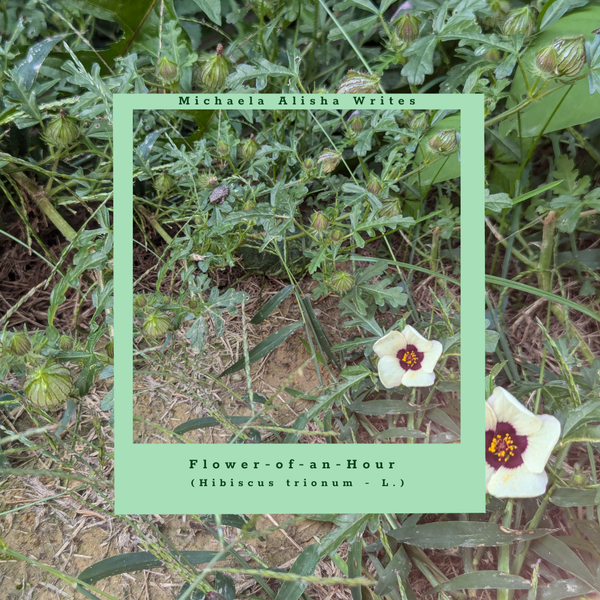Witch’s Butter: Spring Has Arrived!

Phil, the Groundhog, was right. Spring has arrived early, and it’s here to stay!
As I looked out my window today, I saw a very determined male cardinal attempt to court a female just as determined to evade his advances. The bright green of leaves ready to unfurl peak out amongst the greys and browns of winter’s end. Spring is all around us, and I couldn’t be happier to shake off the seasonal depression and immerse myself back into nature.
Yet it wasn’t the horny male birds or the bright green of the leaves that were my first indicator that the world’s starting to warm up again. A small burst of bright orange on a lone branch has been my seasonal groundhog without fail for three beautiful years. I only have about four weeks left before I move into my own home, which I will be living in with my best friends (making the best of a bad economy), and so this year will be the last year I get to enjoy the magical Witch’s Butter.

What is Witch’s Butter?
Imagine a mushroom resembling a little blob of shiny, bright yellow to yellow-orange rubbery butter. That’s the witch’s butter mushroom! Commonly confused with the Orange Jelly spot, the Dacrymyces chrysospermus (formally Dacrymyces palmata) is a unique mushroom that grows on dead wood, like old trees or logs. They can pop up year-round but prefer cooler weather, like my little, punctual friend, such as early spring. The name “witch’s butter” is because it looks like something a witch might use in a magical potion. You can’t deny these crazy-looking shrooms would fit right in amongst the newt eyes, frog legs, or whatever else a witch uses in their recipes.
Witches butter is an edible wild mushroom. Being studied for its immune boosting properties, it is made up of polysaccarides (carbohydrates) and is one of the few edible mushrooms that can be eaten raw. They’re not particularly known for being delicious but it’s good to know this brightly colored fungi at least is safe if I ever find myself lost in the woods no matter what time of year.
However, be cautious of it’s little sibling, Dacyrmyces palmatus, or the “dissolving mushroom”. This twin is considerably smaller, with more singular blobs as opposed to giant, textured clusters and will dissolve when handled as opposed to the Witch’s . It is more orange than the Witch’s Butter in color and is more white where it is attached to its log host. Dacrymyces capitatus & Dacrymyces stillatus are also similar in appearance to the Dacyrmyces palmatus but are more yellow and orange respectively.
Species
The Witch’s Butter has three main species:
Tremella mesenterica,
Tremella aurantia (Naematelia aurantia),
and Dacrymyces chrysospermus (aka Dacrymyces palmatus)
This particular species is the T. mesenterica, a parasitical fungus that latches onto other fungi, specifically targeting species in the Peniophora genus, which are crust-like fungi found on dead and dying logs and twigs. The exception is the Dacrymyces chrysospermus which chooses to attach itself directly to the log.T. mesenterica grows directly from the Peniophora fungi it targets. Spotting the Peniophora may not always be easy, but the crust fungus may still be visible on other parts of the stick or log.
After a few days, the fungus dries out, turning into a shriveled blob of dark reddish-orange goop. It’s a dramatic species and is fully capable of perking up after the next rain. But hydration is essential no matter who you are!
Folklore
A unique feature of the Witch’s Butter is that once a piece of wood is infected, it stays infected so it returns year after year, like the one on the dead branch in my yard. Witch’s Butter made frequent appearances in Eastern European folklore. They believed that if you found witches’ butter fruiting from your door frame, a spell had been placed on your house and family. These were the days before chemical sealants, so Witches’ butter would often sprout from the soft wood of exposed door frames. They believed the only way to completely remove the spell from their home was to pierce the mushroom with something sharp and drain out the juices. I can only imagine their frustrations and horror when the bright yellow would inevitably show up the next year!
The Swedish believed that the mushrooms were evidence of witches working together to borrow the cows of local townsfolk in the middle of the night to gather enough milk for themselves but inevitably scattering bits of “butter” on the ground that reappeared yearly.
The Chinese even used Witch’s Butter mushrooms to treat and soothe coughs and reduce phlegm while improving metabolism and slowing aging. If the witches of old really used this as an ingredient, they certainly knew what they were doing!
Key Takeaways:
Learning about mushrooms like Witch’s Butter can help us foresee the changing seasons and appreciate nature’s strange and diverse beauty. While it may look weird and squishy, this mushroom is an interesting part of our environment and has been seen in different cultures from folklore to natural medicines. Exploring and appreciating the natural world around us, even the small and unusual parts like mushrooms, is important. Lydia Deetz proudly declared in my favorite movie, Beetlejuice, “I myself am strange and unusual” and I think this funky little shroom cam certainly relate.
I debated taking the branch with me when I move, but I think I’d rather leave it for the new family to discover. I hope they take as much joy as I to see nature’s bright reminder that spring it on the way.
Sources:
Stevens, Michael Wood & Fred. “California Fungi: Dacrymyces Stillatus.” MykoWeb, www.mykoweb.com/CAF/species/Dacrymyces_stillatus.html. Accessed 5 Mar. 2024.
“Witches’ Butter: Species, Foraging, and Cooking This Odd Fungus.” Mushroom Appreciation, 16 Nov. 2022, www.mushroom-appreciation.com/witches-butter-species-foraging.html#all-about-witchs-butter.





